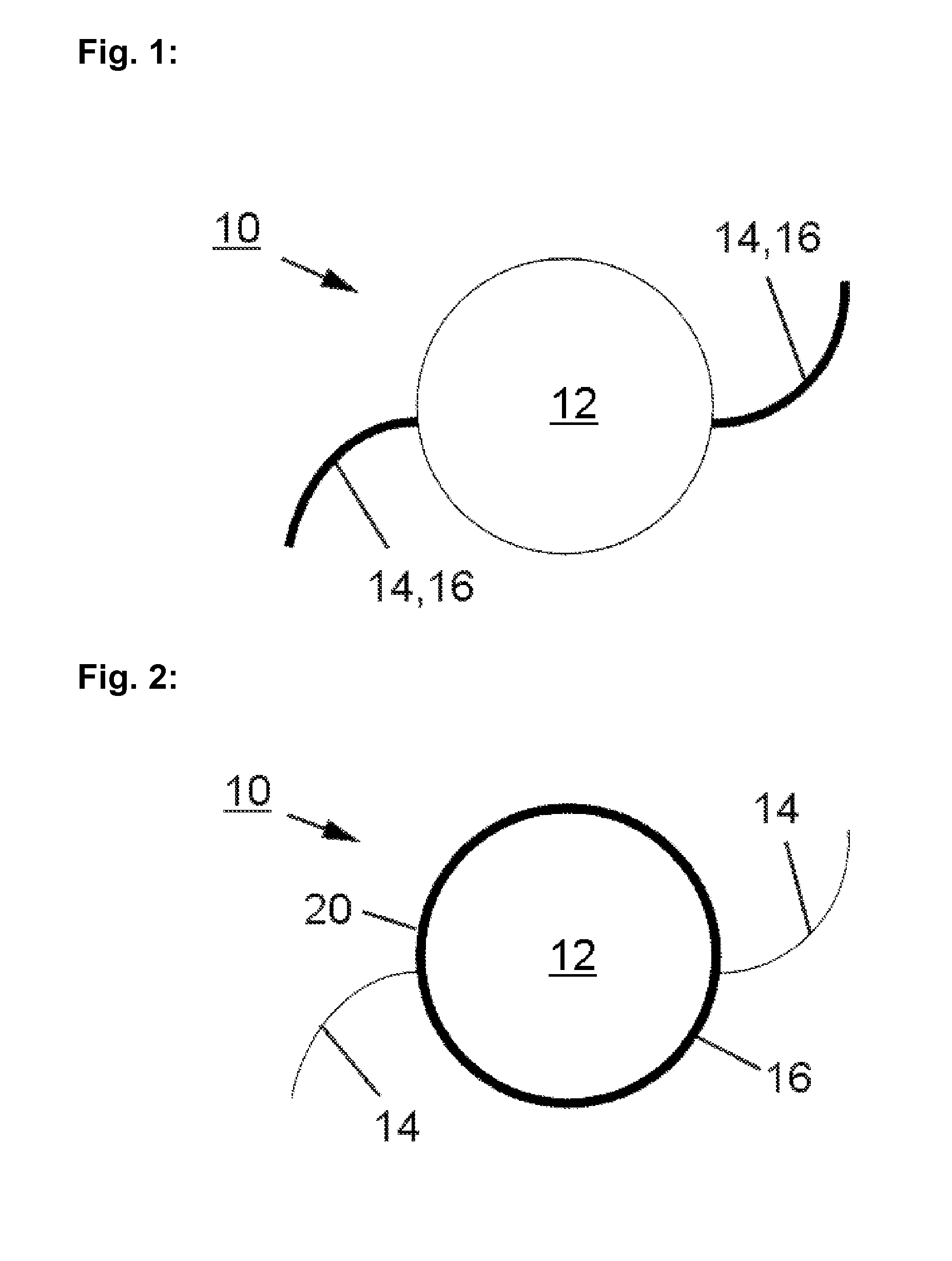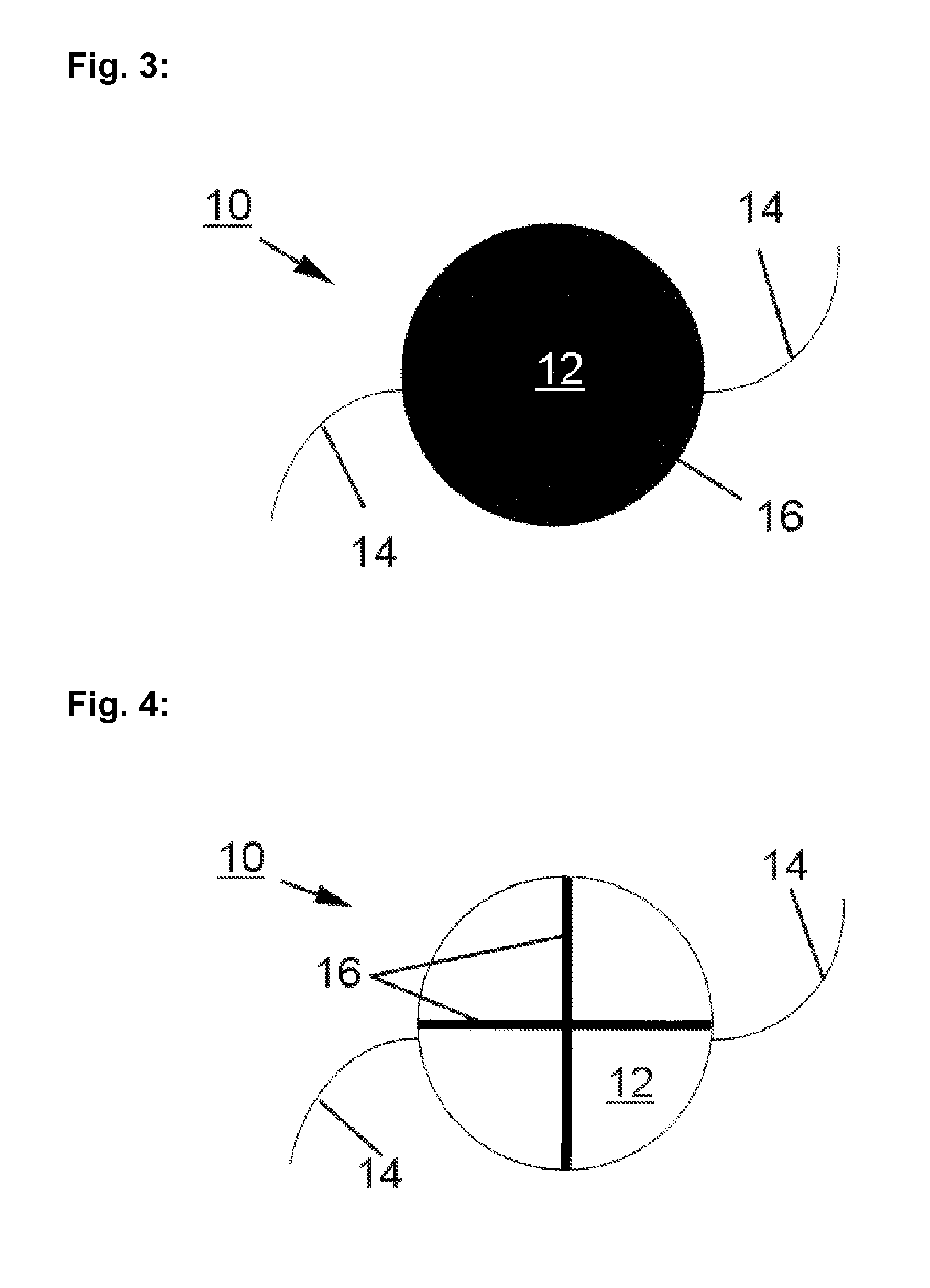Ophthalmologic Implant
- Summary
- Abstract
- Description
- Claims
- Application Information
AI Technical Summary
Benefits of technology
Problems solved by technology
Method used
Image
Examples
Example
[0033]In a schematic representation, in FIG. 1, a first embodiment of an ophthalmologic implant, namely of an intraocular lens according to a first embodiment is illustrated. The intraocular lens 10 is composed of a lens body 12, which is formed as an optical means or has a corresponding optical means (not illustrated). At an edge 20 of the lens body 12, attachment elements 14, so-called haptics, are formed. Usually, the lens body 12 as well as the attachment elements are composed of a hydrophobic or hydrophilic acrylate material. In particular, the lens body 12 and the attachment elements 14 are made of polymethyl methacrylate (PMMA) or soft copolymers consisting of a hydrophilic monomer and an alkoxyalkyl methacrylate monomer. Therein, the lens body 12 is formed such that the used material does not substantially influence the light transmission of the implant or of the intraocular lens 10 in the visual spectral range between ca. 380 nm and ca. 780 nm. Such a configuration of the i...
PUM
 Login to View More
Login to View More Abstract
Description
Claims
Application Information
 Login to View More
Login to View More - R&D
- Intellectual Property
- Life Sciences
- Materials
- Tech Scout
- Unparalleled Data Quality
- Higher Quality Content
- 60% Fewer Hallucinations
Browse by: Latest US Patents, China's latest patents, Technical Efficacy Thesaurus, Application Domain, Technology Topic, Popular Technical Reports.
© 2025 PatSnap. All rights reserved.Legal|Privacy policy|Modern Slavery Act Transparency Statement|Sitemap|About US| Contact US: help@patsnap.com



